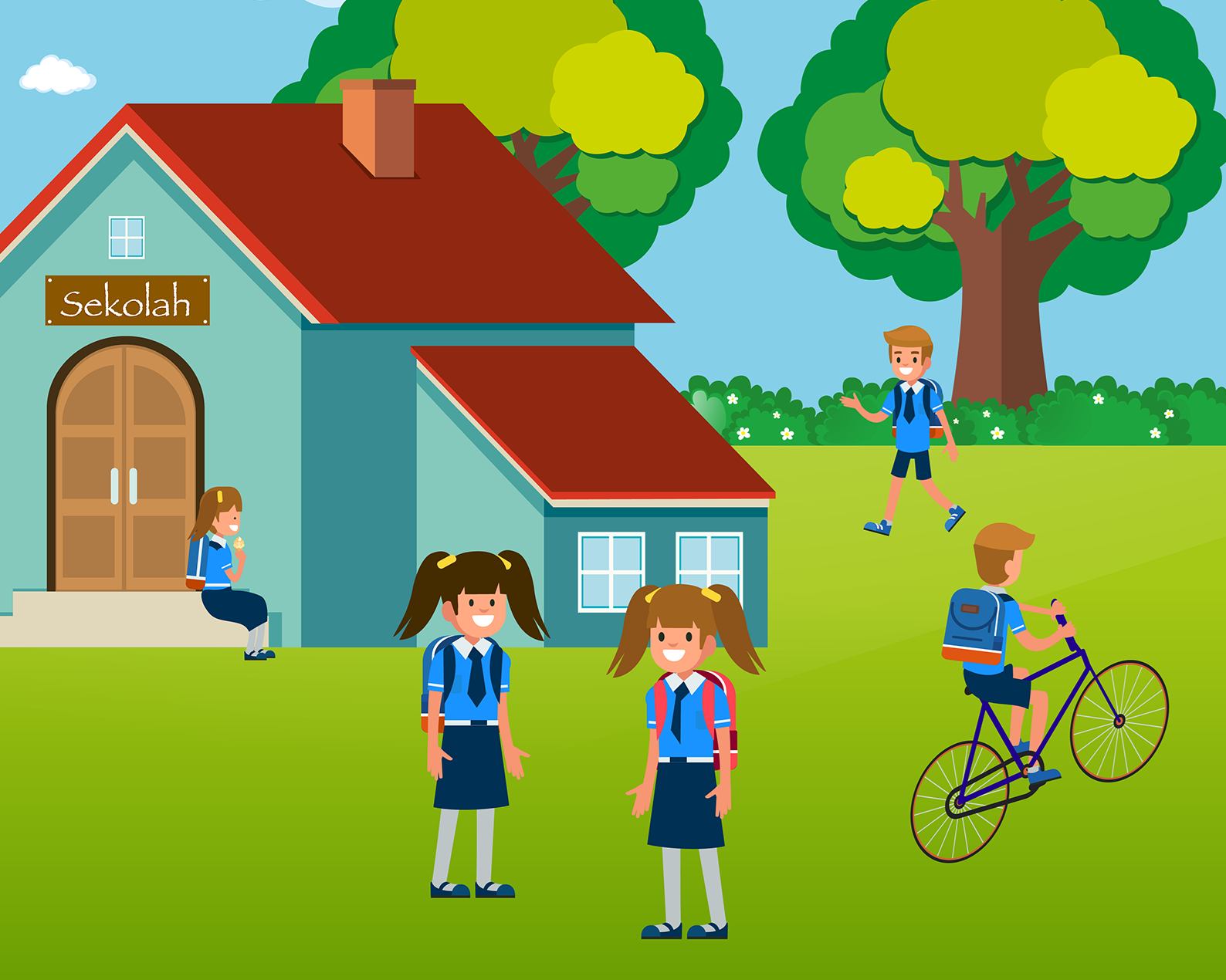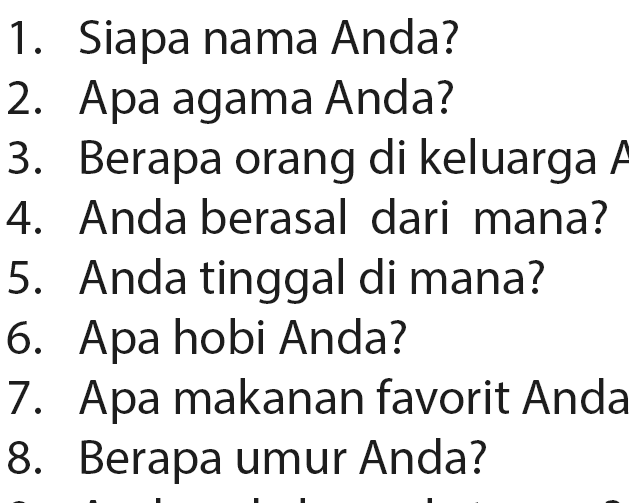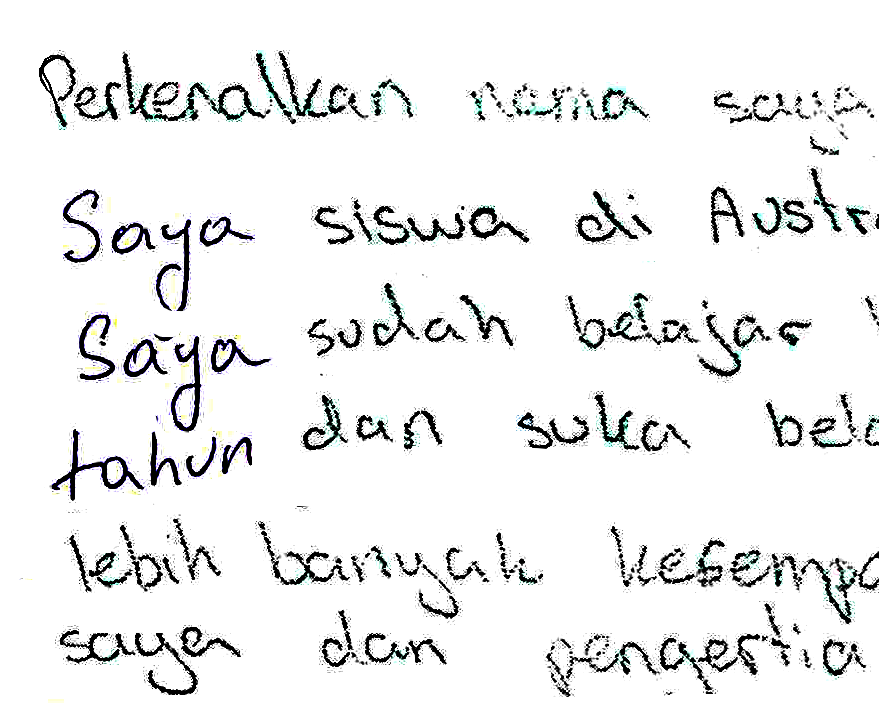Languages: Indonesian - Satisfactory - Years 9 and 10 (Year 7 entry)
Portfolio summary
This portfolio of student work shows that the student can interact with peers and adults using written and spoken Indonesian to communicate (WS3) about personal interests and relationships (WS1), practices and experiences (WS2, WS4, WS5), and about broader issues such as health and the environment, including as these relate to Indonesia. The student responds to and creates personal, descriptive, informative and imaginative texts for a range of purposes (WS1, WS2, WS3, WS4, WS5). The student uses both rehearsed and spontaneous language, and exchanges facts, ideas and opinions, using questions (WS4) such as Bagaimana, Mengapa and Untuk apa?. The student applies conventions of pronunciation, stress and rhythm to a range of sentence structures (WS4). The student uses a variety of me- verbs, pronouns (WS1), and noun forms (WS3) such as ke-an, pe- and pe-an (WS4, WS5). The student can apply knowledge of textual features such as salutations, sequencing (WS1, WS2, WS3, WS5), and persuasive and emotive language to comprehend and create public texts (WS4, WS5). The student uses embedded clauses with yang to expand ideas, and create cohesion and interest (WS4) by using conjunctions (WS1, WS2, WS3, WS5) such as misalnya, seperti, termasuk and yaitu (WS5). The student refers to the past (WS5) (for example, yang lalu, dulu), present (WS5) (for example, sedang, sedangkan, sambil, sementara) and future (WS5) (for example, akan, mau, kalau, besok, masa depan). The student engages with others using formulaic expressions (WS5) and verbal fillers to sustain and extend interactions (for example, maaf, mohon diulang, saya kurang memahami, oh, begitu! dan kamu?, dengan siapa? Maksud saya, anu). The student translates texts and create bilingual texts, comparing different interpretations and deciding how to deal with instances of non-equivalence, such as proverbs, idioms, proper nouns, and culture-specific terms and expressions. The student describes own reactions in intercultural encounters (WS4, WS5) and reflects on how these may relate to own assumptions and identity, and how they may be perceived by others.
The student knows that Indonesian is a national, standardised language (WS3, WS4, WS5) used for education, media and government, and that it is one of many languages in Indonesia. The student knows that language use varies according to context, purpose, audience (WS4) and mode (WS2), and that languages change over time. The student identifies colloquial forms (WS2) (for example, banget, cowok) and makes connections between these and their formal counterparts (for example, gimana?/Bagaimana?; kalo/kalau; nggak/tidak). The student uses metalanguage to discuss features of language, texts and grammar such as object-focus construction. The student knows affixation rules for forming verbs (WS1) (for example, me-kan, me-i) (WS3) and nouns (for example, pe-, pe-an, ke-an) (WS4, WS5) and applies this to predict and decipher meanings, including using bilingual dictionaries effectively. The student knows that Indonesian borrows from other languages, including local and foreign languages. The student makes connections between aspects of culture in language use such as terms for artefacts (for example, kris, andong), practices (for example, minum jamu, batik/ikat), ideas (for example, halus/kasar) and values (for example, sopan/tidak sopan, rendah hati) (WS4).




